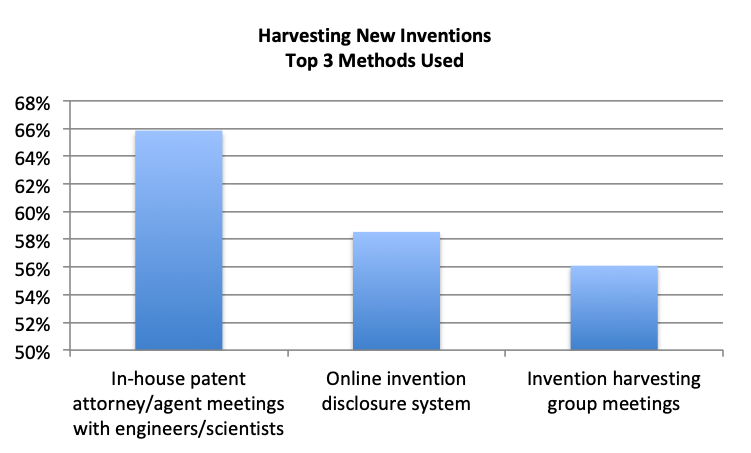Comprehensive Invention Harvesting, Selection, and IP Protection Decisions Best Practices
Increasing the number of high-value inventions, better quality, complete invention disclosures, and improving or maintaining inventor interest and support of the patent process are critical challenges in today’s intellectual property-driven companies.
The Invention Harvesting, Selection, and IP Protection Decisions Best Practices report teaches us that most companies use multiple methods to identify and capture inventions, yet only a few are considered adequate. Companies balance driving an increase in invention disclosure submissions while managing quality. Multiple vetting practices are standard operating procedures, including review procedures before invention disclosure submission, prior art searches, and multi-role patent review committees that meet regularly.
In this Invention Harvesting, Selection, and IP Protection Decisions Best Practices comprehensive study, innovation-driven companies shared effective invention harvesting methods, invention disclosure review, and selection practices, use of prior art searches, IP protection decision factors, patent review committee responsibilities, patent portfolio pruning criteria, and performance metrics.
This Invention Harvesting, Selection, and IP Protection Decisions Best Practices report enables you to evaluate the following:
- Primary and most effective invention harvesting methods for capturing high-value inventions
- Pre-invention disclosure submission review practices
- Frequency of accelerated patent preparation and filing
- Frequency, timing, and responsibility of conducting patent prior art searches
- Assessment methods and criteria for intellectual property protection decisions
- Stakeholders participating in intellectual property protection decisions
- Use of intellectual property valuation scorecards
- Key strategies and factors used for patent portfolio pruning and patent divestment


Reports are available in a variety of configurations and segmentations such as industry, R&D intensity, revenue, and patent volume..
Best Practices Benchmarking®
Related best practices reports you may be interested in
Learn how we provide intellectual property best practices that you can use to improve your operation.